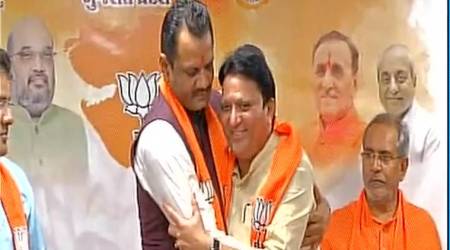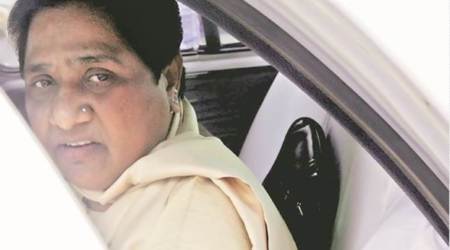 Prime Minister Narendra Modi and BJP chief Amit Shah (Source: Vishal Srivastav/file)
Prime Minister Narendra Modi and BJP chief Amit Shah (Source: Vishal Srivastav/file)
The powershift in Patna will set off ripples far beyond the political boundaries of Bihar that will touch the 2019 Lok Sabha elections.
For the BJP which was trounced in Bihar barely 20 months ago despite being resurgent across the country, joining the government there with JD(U)’s Nitish Kumar is a massive psychological and sociological gain. In stark contrast, it re-affirms the disarray in the Opposition ranks which is struggling to work out a coherent pitch against Narendra Modi at the national level.
Until a few weeks ago, Nitish was considered the tallest potential challenger of Modi — one who is untainted with charges of political corruption or nepotism. That he has junked his ally, the RJD — an ally which got more seats than his party — is a boost to the BJP. His popular appeal among non-Yadav OBCs and poor sections in the Hindi heartland will only add to Modi’s aggressive pitch among these sections. His switch, therefore, buttresses Modi’s political decision to choose a Dalit from the Hindi heartland to the position of the President of India to consolidate the party’s appeal among the poor and backward sections of the society. Click here for Nitish Kumar swearing-in LIVE updates
Within Bihar, specifically, the BJP-Nitish alliance is a return of the formidable social alliance of upper castes and non-Yadav OBCs that had relegated Lalu Prasad’s Muslim-Yadav combination to a meagre 22 Assembly seats in the 243-member Bihar House in the elections of 2010. For the BJP, an alliance with the JD(U) almost secures a potential sweep of 2019 Lok Sabha elections after its humiliating defeat in 2015.
For the Opposition, the falling apart of the grand-alliance in Bihar will erode public trust and credibility towards any future attempt to cobble up a coalition of Opposition parties at the national level. It dashes Opposition hopes to ride the Lalu-Nitish-Congress grand alliance in Bihar to rein in BJP in Hindi heartland in 2019. Bihar sends 40 MPs to Lok Sabha. BJP had won 31 in 2014 Lok Sabha elections before it suffered a massive electoral setback at the hands of Lalu-Nitish alliance.
Not just Bihar, the breakup of the Patna alliance will also undermine attempts to cobble a grand-alliance of the SP-BSP-Congress in the politically crucial Uttar Pradesh. Modi, who began his overtures to Nitish when he attended the 350th centenary of Guru Gobind Singh in Patna Sahib in January 2017, seems to have started exploring attempts to avoid an SP-BSP alliance in UP.
On the day when Patna took the headlines, Modi took time out to attend a function to mark 25 years of the parliamentary career of SP leader Ram Gopal Yadav, who is considered close to SP chief Akhilesh Yadav. UP and Bihar, together, send 120 members to the Lok Sabha and the NDA had won 104 of these in 2014. These two Hindi heartland states hold the key to the 2019 political battle. The Nitish switch will go a long way to secure Bihar for the NDA. As for UP, the BJP already has a state government there and lot more ammunition at its disposal to fight its political opponents with almost two years to do its spadework.
So the resignation of Bihar chief minister Nitish Kumar is more than just another case of political realignment confined to a state. It’s been said that in politics, Bihar shows the way. Tonight’s drama in Patna may presage the grand 2019 theatre of Lok Sabha elections.
While it appears a political win-win situation for BJP, the gains for Nitish Kumar are still a matter of conjecture as he will continue to be Bihar Chief Minister which he was anyway. Nitish’s alignment with Modi, in fact, may provide the ice-breaker to many fence-sitters among the regional parties to gravitate towards BJP ahead of 2019.

